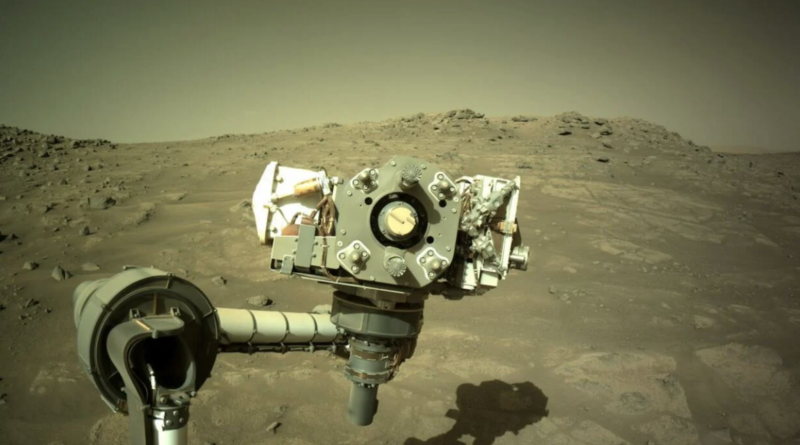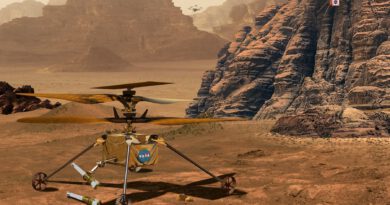NASA rover finds damaged helicopter in the middle of Mars desert
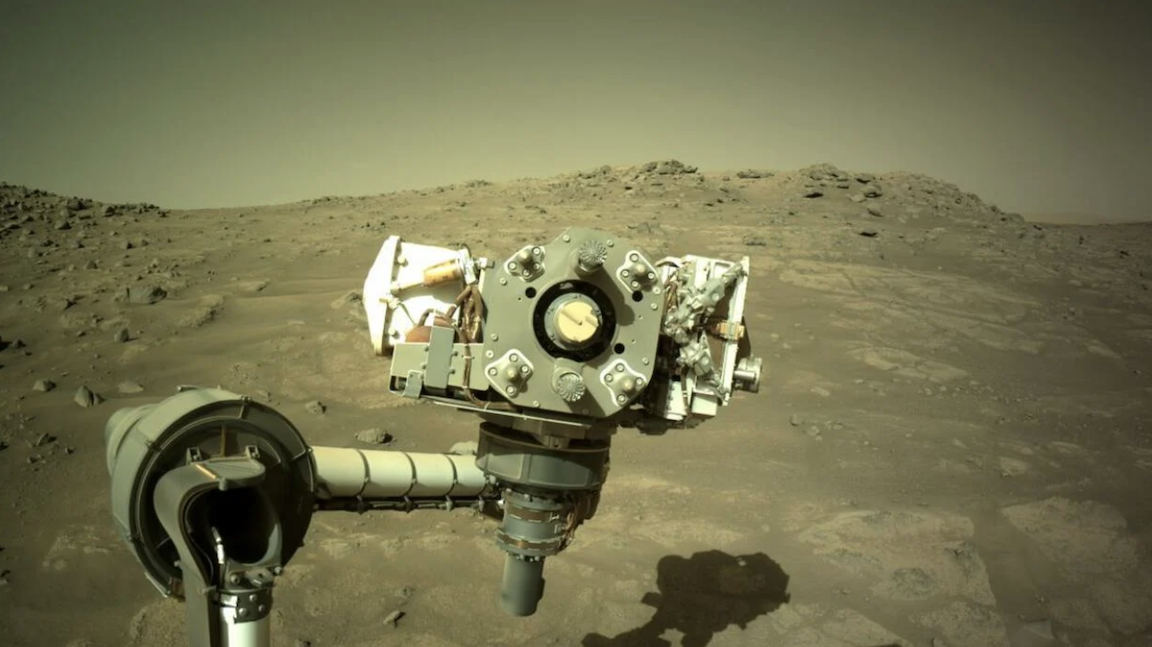
After a recent rough landing, the damaged Ingenuity helicopter can’t fly again. Now, NASA’s Perseverance rover has spotted the grounded extraterrestrial chopper sitting alone in a valley on Mars.
The NASA imagery below, processed and enhanced by the geovisual designer Simeon Schmauß, underscores the desolation of profoundly arid Mars, a desert planet that’s largely lost its insulating atmosphere and is 1,000 times drier than the driest desert on Earth.
Both the Perseverance rover and its former aerial scout, Ingenuity, had been searching for the best places to look for past evidence of Martian life — should any ever have existed. Now the car-sized rover will hunt alone.
Before its recent accident, the Ingenuity craft made history. The experimental robot was the first craft to ever make a powered, controlled flight on another planet. And then, it kept flying. Ingenuity flew on Mars a whopping 72 times — engineers initially hoped it might fly five times, if at all. It flew distances as far as 2,315 feet.
And it overcame a daunting flight challenge. The Martian atmosphere is quite thin, with a volume about one percent of Earth’s. This makes it difficult to generate the lift needed for flight. To take to the air, Ingenuity spun its four-foot rotor blades at a blazing 2,400 revolutions every minute.
Yet a hard landing on Jan. 18 resulted in broken rotors. The helicopter can no longer generate the lift needed for flight.
The images below show Ingenuity’s “final resting place among the sand ripples in Neretva Vallis,” Schmauß wrote on his Flickr page.
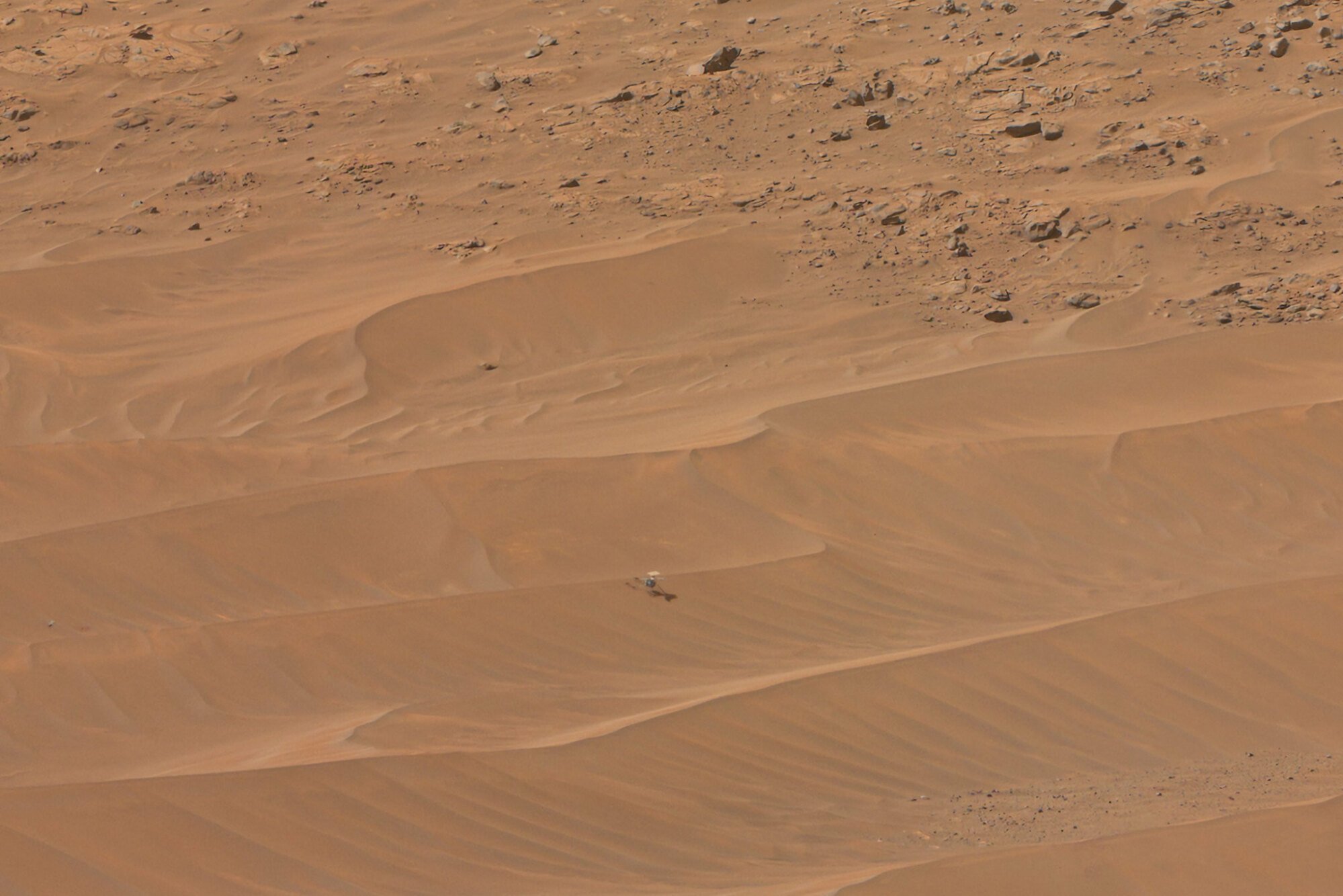
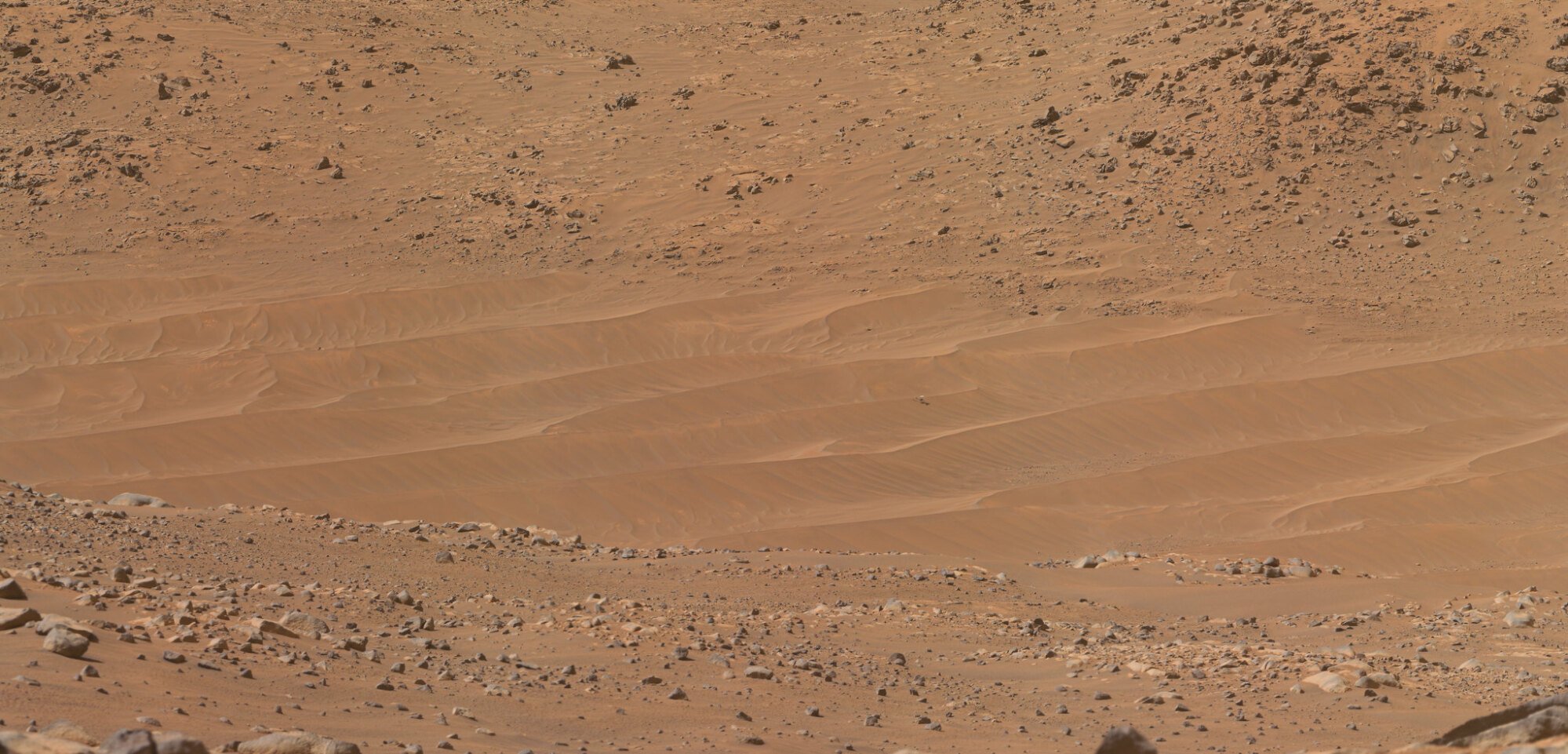
This smooth, sandy terrain was ultimately Ingenuity’s demise. The helicopter navigated by using software to track the movement of objects, like rocks, below. But the sandy terrain was largely “featureless,” NASA explained.
“The more featureless the terrain is, the harder it is for Ingenuity to successfully navigate across it,” the space agency said in a statement. “The team believes that the relatively featureless terrain in this region was likely the root cause of the anomalous landing.”
The ripples of Martian time will now shape around, and upon, Ingenuity. Perhaps a dust storm, or a common, though potent, Mars dust devil will knock the robot over. But its legacy is certain. Ingenuity proved that flight on Mars isn’t just possible — but aerial exploration may loom large in Mars’ future. In the coming decades, a Martian plane may even swoop over the desert world.
